They have a cool factor that entices and can utterly disable the ability to make a rational purchase decision. More than a few pilots you hang with claim that you’re not a real pilot until you fly tailwheel. Plus, watching one slip down final to a deliciously soft touchdown on a grass runway just plain looks like more fun than is legal in many states. What’s involved with learning to fly a tailwheel machine? Can you rent one once you do so? What’s a good one to buy? Can you get insurance if you decide to buy one?
The quick answers are that the FARs require specific training and an instructor’s endorsement to fly a tailwheel airplane as PIC, some operators that give tailwheel checkouts do rent the airplanes to you once you’ve completed it and the current insurance market means that you will probably have to jump over some manageable hurdles to insure a tailwheel bird if you are under age 60—the hurdles get successively higher once past 60. We’ll go into depth on all of that and more below.
The Regs
In the early 1990s, responding to the number of runway loss of control (RLOC) takeoff and landing accidents in tailwheel airplanes, the FAA decreed that henceforth, anyone desiring to fly as PIC in an airplane with the steering wheel in the back must receive tailwheel flight training, demonstrate proficiency in specific flight operations and receive an endorsement from a CFI attesting to compliance.
The requirement is currently enshrined in FAR 61.31(i), which says that you must show proficiency in normal and crosswind takeoffs and landings, wheel landings and go-around procedures. Sounds easy.
Well, um, sorta. It requires concentration and hard work—you aren’t going to be bored. Plus, after flying nosewheel airplanes, you’re going to find that some of the techniques you’ll need to master involve actions and thought processes directly counter to what you’ve been doing for all this time.
Our experience teaching tailwheel flying for over 45 years and talking with scores of tailwheel instructors is that a newbie to the tailwheel world should plan on 10 hours to complete a thorough checkout. Many will finish in less time, but 10 hours is a solid number for planning so that you are unlikely to be surprised by the cost.
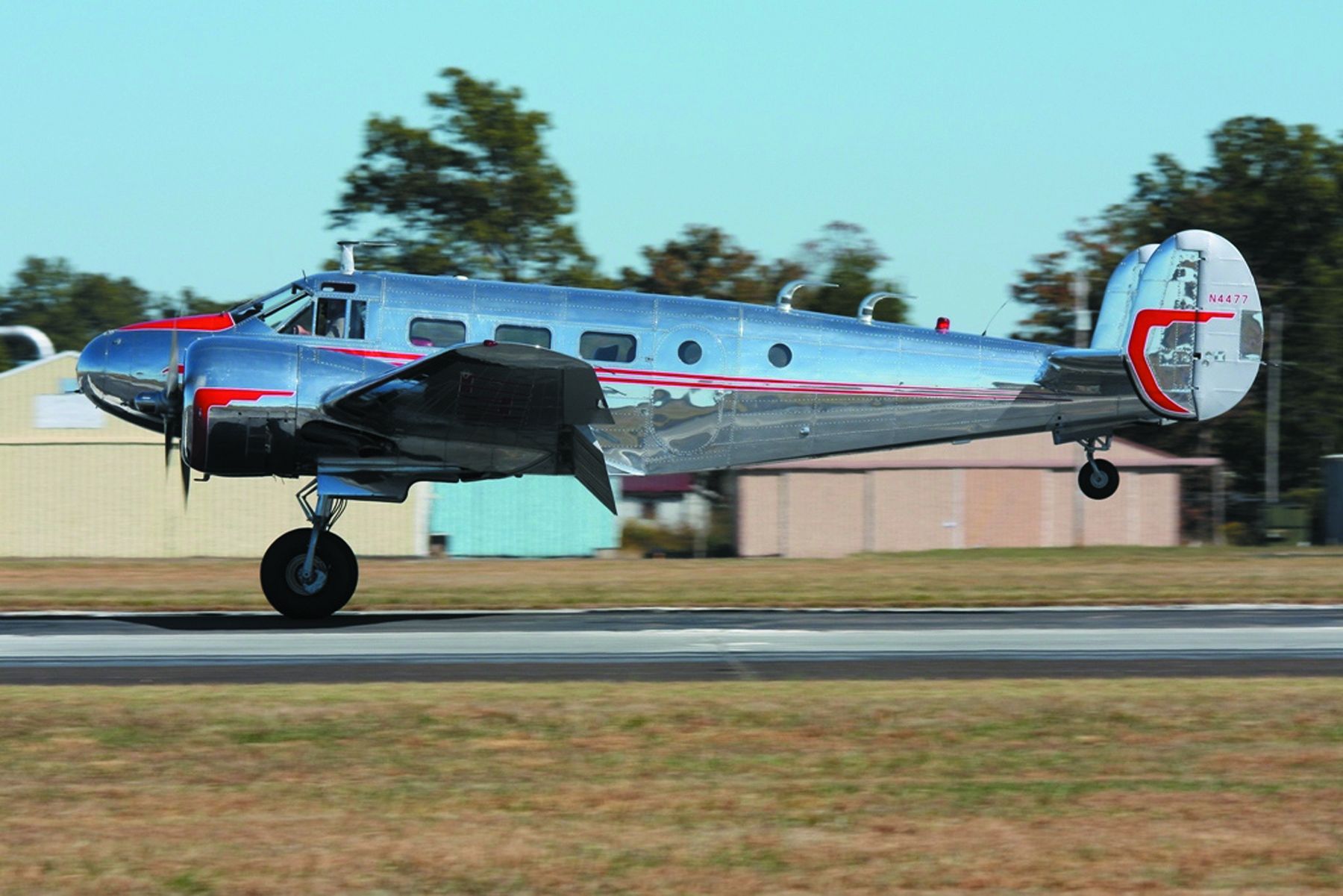
Going For It
The first challenge you’ll face is finding a flight school or FBO that gives tailwheel training. They exist, but you’ll probably need to do a little searching and may have to travel to get to one. The hard reality is that the landing accident rate for tailwheel airplanes is two to three times what it is for nosewheel airplanes—peruse the accident data in the Used Aircraft Guide in back issues of Aviation Consumer for some eye-opening data—and a lot of flight schools that once gave tailwheel training stopped because their trainer(s) were wrecked by renters.
Fortunately, there are still a number of flight schools all around the country that offer tailwheel training and some will combine that training with such things as backcountry operations or aerobatics. Our review found Summit Aviation (www.iflysummit.com) in Bentonville, Arkansas, offering tailwheel training in a Piper J-3 and a Super Cub and a connection to well-known Byrd’s Adventure Center, a backcountry playground with two grass strips. Greg Koontz Aviation (www.gkairshows.com) is a one-person operation with tailwheel training and aerobatic instruction in a Super Decathlon as well as a J-3 Cub in Ashville, Alabama. We also noted Northern Air (www.northernair.biz) in Bonners Ferry, Idaho, an FBO that gives tailwheel training in a Citabria 7KCAB as well as flights into the nearby Idaho backcountry.
Most of the tailwheel training establishments we spoke with said that it’s not uncommon for students to travel to them, so they will work to meet the student’s schedule as well as help them find local lodging.
Cost varies by the type of airplane. Our review disclosed a working average of $200 per hour, dual.
What To Expect
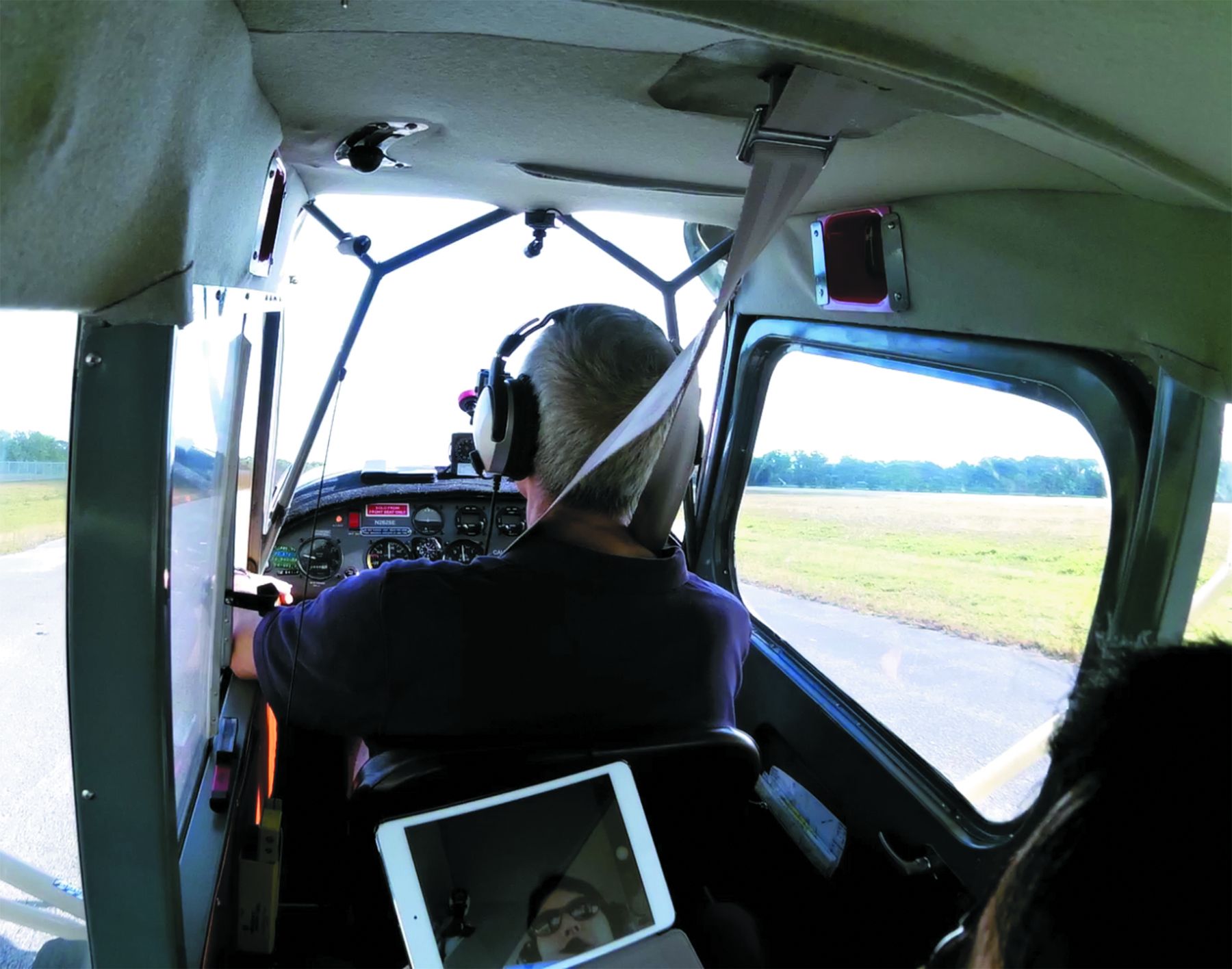
The essence of tailwheel training is pure stick-and-rudder flying with an emphasis on absolute precision in directional control on takeoff and landing along with learning the appropriate pitch attitudes for all flight operations.
We completely agreed with what Greg Koontz, airshow pilot and longtime tailwheel instructor, told us he considered were prerequisites for pilots about to start tailwheel training—show up proficient in crosswind takeoffs and landings, being able to hold airspeed precisely and with an understanding of the coupling of the ailerons and rudder.
Koontz strongly suggested that a tailwheel checkout is not for someone who is getting back into aviation after some time off—it will greatly prolong the process. A nosewheel pilot who wants to get the rust off should do so in a nosewheel airplane and then start a tailwheel checkout.
Syllabus
Prior to training, your school should provide you with a syllabus to help you prepare. Based on our experience and interviews with tailwheel training schools and flight instructors, here’s what we think should be included in a tailwheel training course.
• Ground training. Things should start with extended discussion targeted at getting the student to, frankly, change a way of thinking, beginning with developing a visceral understand of what it means to have the center of gravity behind the main landing gear and the need to take action to stop every turn.
The ground and flight training should be tied in with a combination of inculcating an absolute intolerance of imprecision—if the nose isn’t pointed within a degree of where it should be, that problem must be fixed right now, with no delay—and a willingness to put a control to the stop to get the airplane to do what the pilot desires.
• Lesson 1 (each lesson may take more than one flight). On grass for as much of the session as possible—taxiing with stick full aft and ailerons positioned for the wind; use of full rudder as needed; use of brakes; directional control on takeoff; turns and coordination exercises to start getting the pilot used to the relationship between the ailerons and rudder; steep turns; slow flight; power-off and power-on stalls; cross-controlled stalls; three-point landings; bounced landings; introduction to go-arounds.
• Lesson 2. Recovery from swerves while taxiing; emphasize speed and pitch control on approach; introduce crosswind three-point landings; introduce aborted takeoffs, power-off 180 landings and short- and soft-field takeoffs and landings.
• Lesson 3. Introduce wheel landings and recovery from PIO and emergencies at various points in the pattern.
• Lesson 4. Demonstrate proficiency in three-point and wheel landings—with approach speed for wheel landings no more than 5 knots faster than three-point landings; crosswind landings; short- and soft-field takeoffs and landings; go-arounds; emergencies; converting bounced wheel landings (never more than two bounces) into either a go-around or three-point landing.
Wheel Landings
Our conversations with tailwheel instructors elicited a common concern—the danger of coming in too fast during wheel landings. All had seen wheel landings taught with 10 to 20 knots tacked onto the normal approach speed as well as significant power carried through the flare while the pilot felt for the runway with the tail and speed high. Once the airplane touched down power was cut.
It’s an easy way to do a wheel landing but it’s also an excellent way to wreck airplanes due to the energy that must be controlled during the rollout. If the winds are gusty things can go south fast. Patty Wagstaff, former national aerobatic champion and proprietor of an aerobatic and tailwheel flight school in St. Augustine, Florida (www.pattywagstaff.com), was adamant about approach speed control for wheel landings: “Don’t add more than 5 knots over the approach speed for a three-point landing.”
Best Training Airplanes
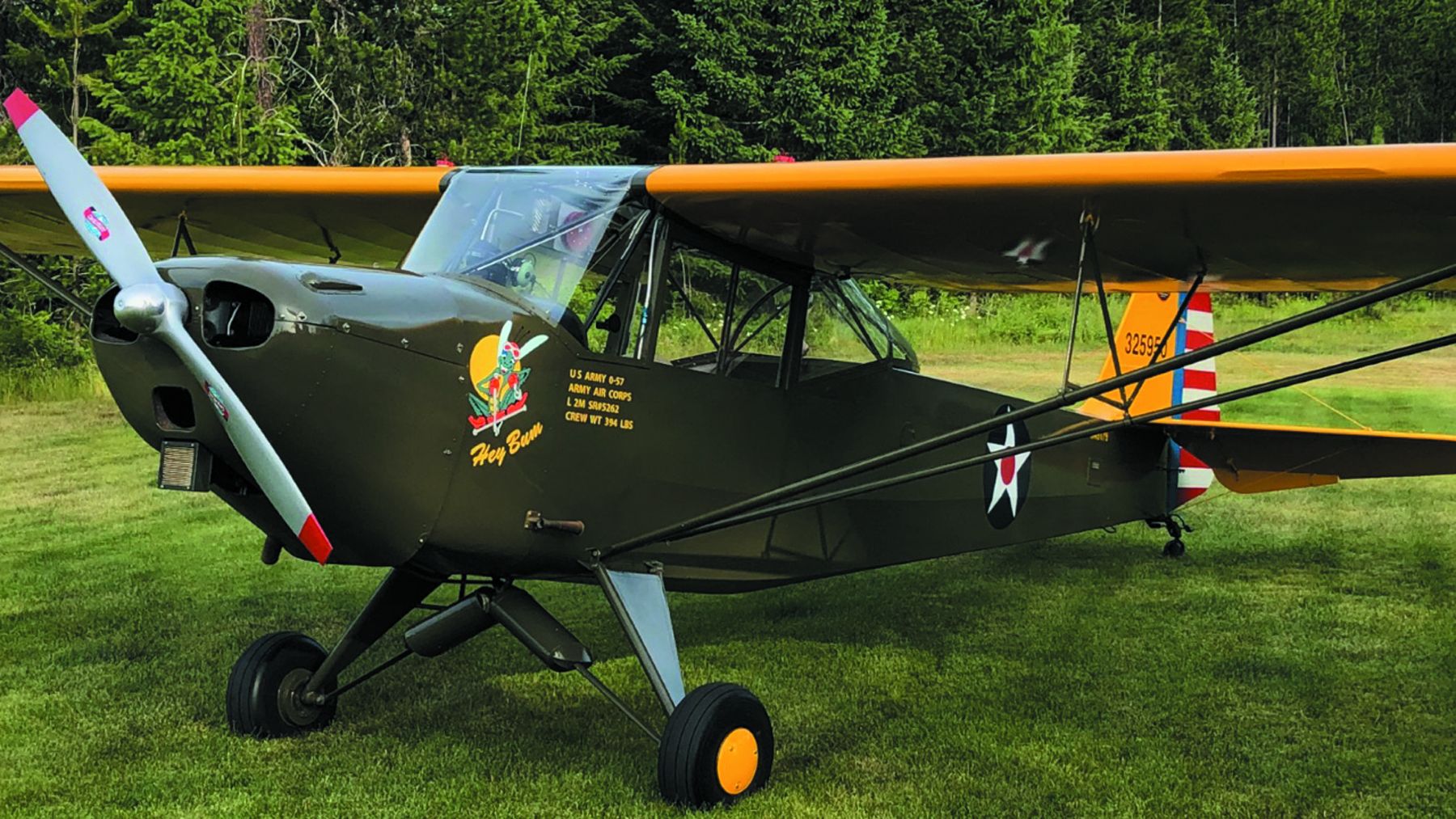
We expected a lot of disagreement between tailwheel CFIs when we asked them which airplanes were the best trainers—but didn’t hear much. Derek DeRuiter of Northwoods Aviation (www.northwoodsaviation.com) in Cadillac, Michigan, told us that he prefers the Piper J-3 Cub although he also likes the Super Cub a great deal.
DeRuiter said that the lower power of the Cub meant that the pilot has to learn directional control on takeoff because it takes some time for the airplane to accelerate. The low stall speed and good ground handling as well as a certain willingness to forgive pilot errors on the ground, particularly on grass, were also mentioned as attributes.
Somewhat surprisingly, DeRuiter said that he liked using the J-3 because it had heel brakes—those little tiny pedals on the floor that are so hard to hit. His reasoning made impeccable sense to us—because they are hard to use in the first place and not very effective in the second, a student is not likely to abuse them and make a bad situation worse—as they too often do with toe brakes. After all, the one thing a student can do that a CFI can’t undo is apply the brakes.
Other instructors, such as Paul Berge (www.paulberge.com) of Indianola, Iowa, has been using an Aeronca Champ—with heel brakes—for tailwheel training for over 30 years, although he recently added a 115-HP Citabria to his training fleet.
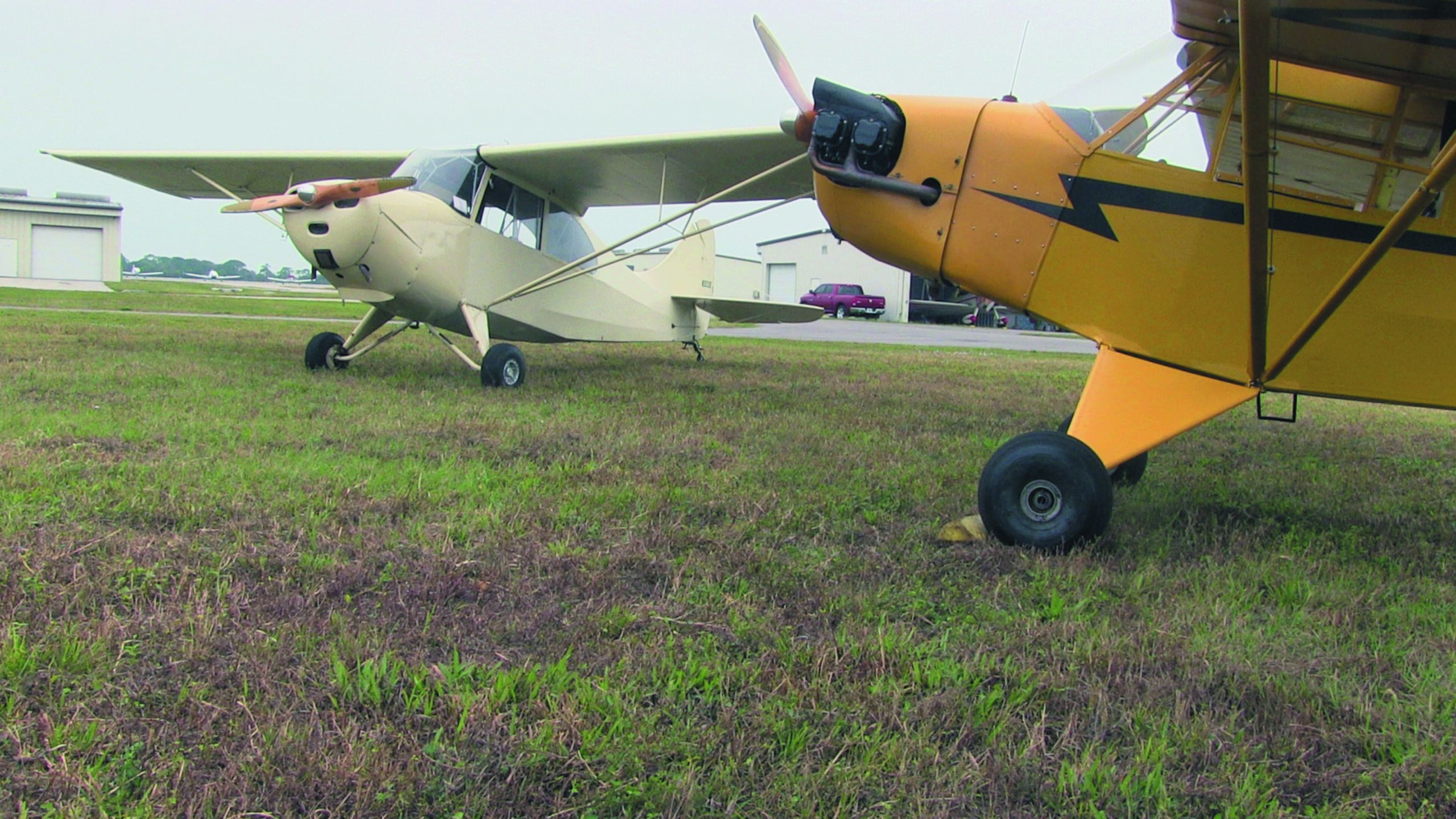
The Citabria series is probably the most widely used tailwheel trainer in the U.S. due to a combination of good ground handling and relatively modest operating costs. The Decathlon has the same good ground handling, but with more power, it is more expensive to use as a trainer, although it is commonly used for combination aerobatic and tailwheel training.
As an aside, comments made by Patty Wagstaff and Greg Koontz matched our experience when it came to combination akro and tailwheel training. Pilots who were learning the large control inputs and dramatic pitch and roll changes involved with aerobatics tended to complete an associated tailwheel checkout in substantially less time than those who were just doing a tailwheel checkout.
CFIs spoke well of virtually all of the production two-seat tailwheel airplanes as well as the Stinson 108, Cessna 170, Piper Pacer/Clipper and Maule line as initial tailwheel trainers. Those in the warbird community said that the World War II “PT” series—although there was disagreement about the Stearman—were great tailwheel trainers although their value was often high enough that CFIs said it wasn’t a great idea to risk such valuable airplanes for such training.
Instructors we spoke with varied on their recommendations of the Luscombe line as trainers. None recommended the Globe Swift as a trainer due to the difficulty in making three-point landings in the marque. In addition, all said that they would not give initial tailwheel training in larger tailwheel birds such as a Cessna 180, 185, 190 or 195, Beech Staggerwing, Spartan Executive and North American T-6 due to their speed, weight/inertia and rapidity in which something could get out of hand before an instructor could do anything about it. All said that they’d do checkouts for pilots in those airplanes after a pilot had received initial tailwheel training and an endorsement in something else.
Best Airplanes To Buy
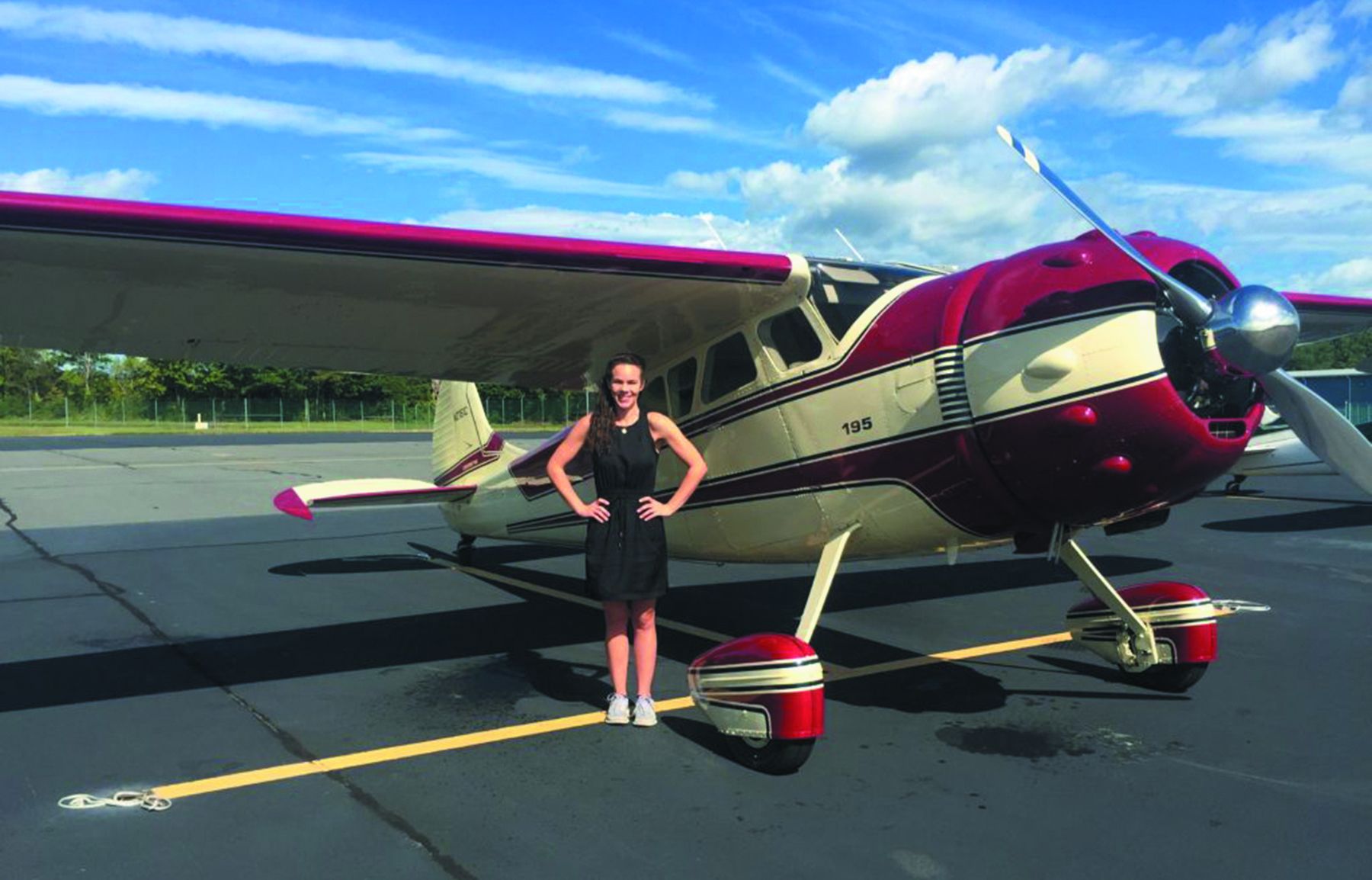
When we spoke with CFIs and tailwheel owners we got a multitude of answers. Interestingly, we were not advised to stay away from any specific type of airplane. Respondents said that all have their strong and weak points, but none have truly nasty handling or crazy maintenance costs that warrant avoidance.
What they felt was important was a very careful prebuy examination because a lot of the airplanes are simply old. Corrosion in the tail structure is a big deal for airplanes that sit tail low. For details, we recommend the Used Aircraft Guide for a specific type of airplane in back issues of Aviation Consumer.
We will highlight one major area raised by many owners when looking at a prospective airplane— make sure that the landing gear is properly aligned. For example, the Cessna 190/195 is a pussycat on the ground so long as the gear is properly aligned. Sadly, it’s common for it to get knocked out of alignment and there are not a lot of maintenance techs who know how to align them. Out of alignment, the airplane can approach uncontrollable on landing—one of the reasons we believe it has the highest rate of RLOC accidents of any airplane we’ve reviewed in the Used Aircraft Guide.
Derek DeRuiter advised us that he’d just looked at the gear of a Cessna 170 an owner was having difficulty with on landing. The left main gear was badly toed in. Once the gear was aligned, the airplane returned to its normal, relatively docile behavior.
For a first tailwheel airplane, we recommend staying away from something with a very high hull value—they’re expensive to insure. Build experience in something less valuable before buying the new Husky.
If you want a warbird, look hard at the “L” (liaison) birds of World War II such as the Taylorcrafts, Stinsons, Pipers and Aeroncas. They have the warbird cachet without the price tag of a P-51.
For just knocking around, we like the lower powered two-place birds. For going someplace efficiently the Cessna 170, especially the large-flap B model, is near the top of the heap and parts are available. By the same token, the Maule line offers a spectrum of engines, allowing them to range from economical traveling machines to serious load-haulers.
We consider the Cessna 180 and 185 to be at the top of the production four-place tailwheel world for their cabin size and load-carrying ability, although they demand a careful checkout from an instructor who knows the breed.
Going into the backcountry? You won’t go wrong with virtually any of the big-engine versions of the two- and four-place production tailwheel airplanes—so long as you are willing to fly them below gross weight.
For more detailed information on tailwheel antiques, classics and warbirds, check back issues of Aviation Consumer; we’ve covered the field.
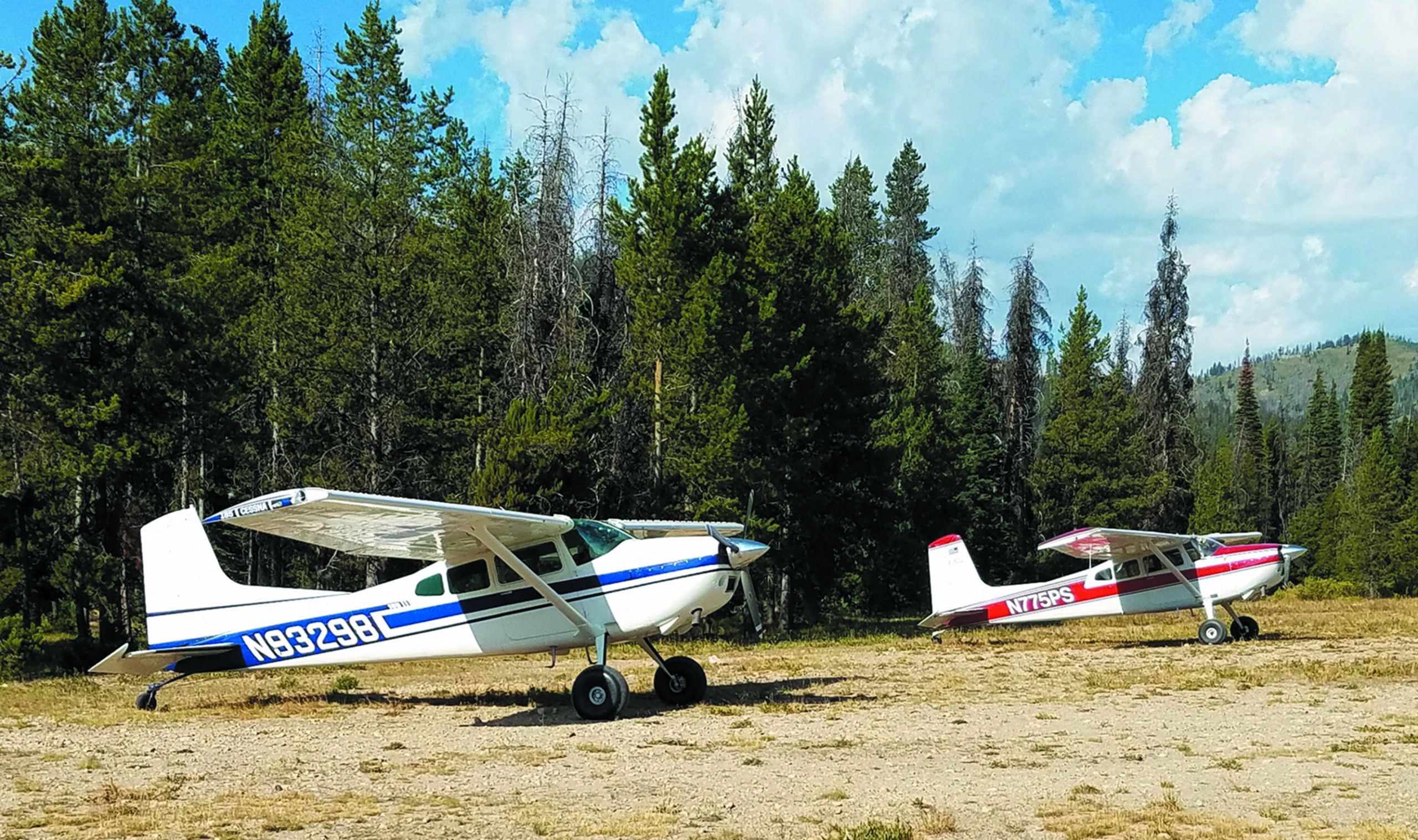
Conclusion
We consider tailwheel flying some of the most fun flying we’ve ever done—so long as it’s approached with hearty respect for its significantly elevated risk of a landing accident, a willingness to take solid initial and regular recurrent training—and a commitment to keep your approach speed under control.
Insurance For Tailwheels: Effects Of A “Hard” Market
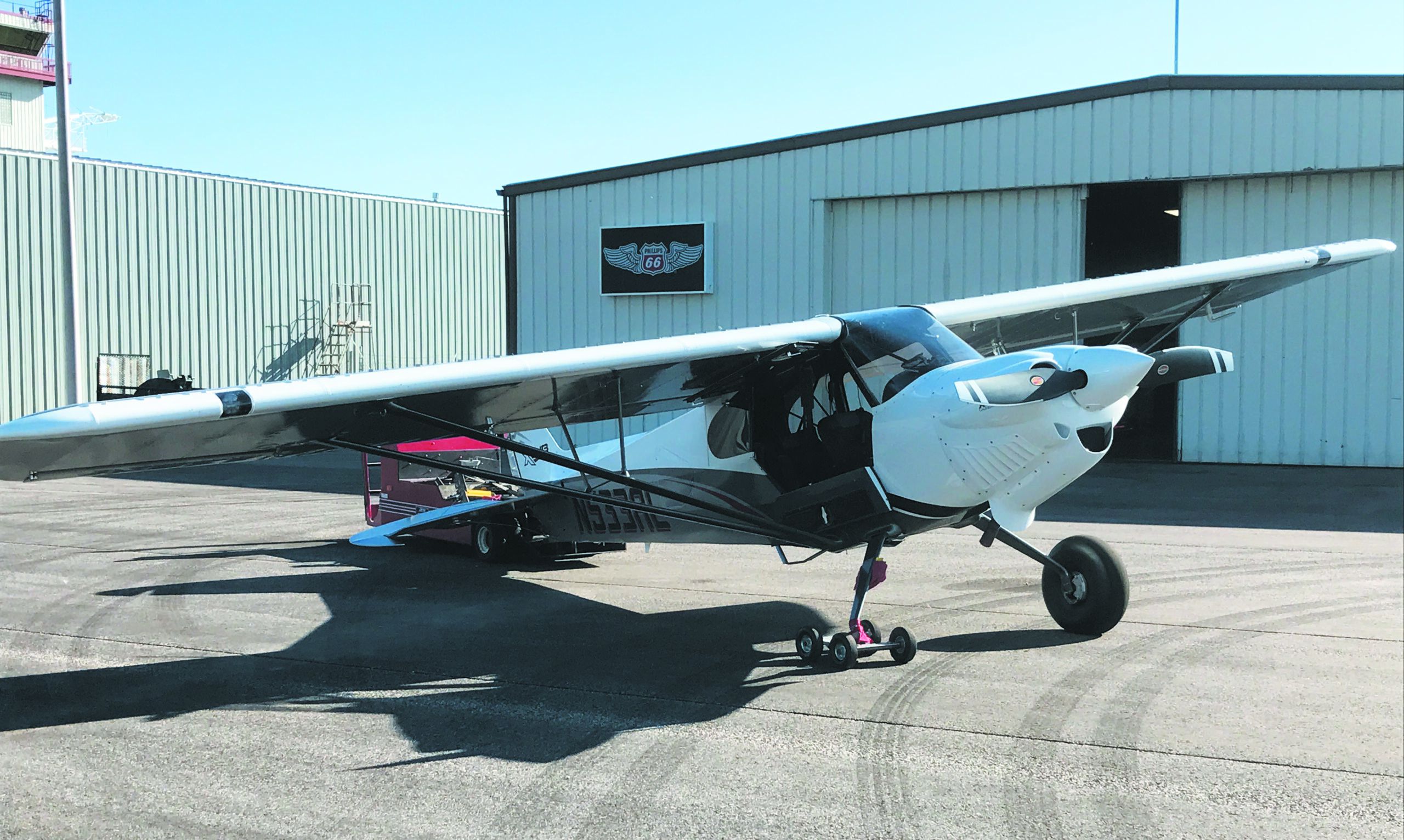
The ongoing allure of tailwheel airplanes for pilots seeking backcountry adventure, flying aerobatics or simply owning one because it has a tailwheel means that we’re always getting questions from prospective owners about whether they can insure their purchase. Our definitive answer is: probably. But it might be expensive. And your age is going to be a factor.
The bottom line is that after nearly 30 years of an incredibly soft insurance market where almost any owner could get insurance for almost any aircraft for shockingly low premiums and insurance companies were looking at a lot of red ink, the pendulum has swung to the other extreme, the market has hardened and things are tough and expensive for aircraft owners.
For prospective tailwheel owners and current owners who are 70 or older, the hard market means doing some homework before applying for insurance or renewing an existing policy.
We had a long conversation with Mike Pratt, an aviation insurance broker with Foundation Risk Partners (www.foundationrp.com), a large brokerage with offices in 14 states. He’s been in the business for 20 years, is also a professional pilot, has been flying tailwheel airplanes since he was a teenager and currently owns a Republic Seabee.
Pratt started the conversation by saying that stupid wrecks and claims and lack of pilot training are what is driving the insurance market for tailwheel airplanes above and beyond the hard market. There are only about a dozen insurance companies that write aviation insurance and not all will insure tailwheel airplanes. It’s up to the owner to put her or his best foot forward when seeking insurance.
With that as background, let’s also look at what scares aviation insurance companies. In the tailwheel world it’s little airplanes with very high hull values. Thinking of high hull values, our thank you to Mike Hart for the photo of the damaged XCub, above.
That means that if you haven’t yet obtained a tailwheel endorsement, don’t buy a brand-new Husky, Scout, Maule or XCub and expect to get insurance with one simple phone call. If you can get it at all, it’s going to cost at least $15,000 for the first year.
Here is what Pratt told us will help you insure a tailwheel airplane:
- Get your tailwheel endorsement before you buy an airplane and apply for insurance.
- Get time in the type of airplane you intend to buy— even if it’s only five hours—before you apply for insurance. Putting down a zero in the time in type box in the insurance application means that some of the insurance companies will not even look at you.
- Be willing to take as much dual as the insurer requires in your new airplane before you fly it solo. So what if it costs you $2000? You may have dropped over $200,000 for the airplane. Pratt told us he sees pilots become tightwads over training way too often—it’s one of the most stupid things they can do. Insurance companies have had their financial faces rubbed in the value of training for years. They know it keeps claims down.
- Never, ever, ever claim flight time or experience that you don’t have when you make an insurance application. If you do have an accident, that’s not only absolute grounds for the insurer to deny coverage, you may be liable for committing insurance fraud.
- If you are 70 or older and have been able to get insurance for your tailwheel airplane, don’t rock the boat. Do not change insurers. Don’t get huffy in response to a big premium increase—the odds are that no one else will insure you and the insurance company that has been loyal to you may drop you. Pratt said that insurers are dropping pilot owners right and left.
- If you have a claim, there’s a good chance that your insurer will drop you, so do everything you can to avoid having an accident. Recognize that you are like all pilots—not very good at evaluating yourself. Therefore, take recurrent training with a tailwheel CFI every six months and specifically ask the CFI to look for evidence that you’ve lost a step or that your skills have slipped. The big risk is RLOC (runway loss of control). Practice a lot of landings, of all kinds, with a CFI every six months. We’re not kidding.
- If you seek to insure an airplane of a type in which it’s tough to find CFIs with type experience, work with your broker to see if the training can be with a “guru” in, for example, Cessna 195s, who has a great deal of experience but is not a CFI. We’ve seen it work out well.
- Recognize that at some age, if you want insurance, you’ll have to switch to a nosewheel airplane.
- If you cannot get hull insurance, you may want to buy liability-only insurance (you should be able to get it) and understand that you’re on your own for the value of the airplane itself in an accident.
- Our bottom line is that before you buy a tailwheel airplane, talk with your insurance broker and come up with a plan to insure it—you don’t want any surprises.
Used Taildraggers: Demand, Prices Up
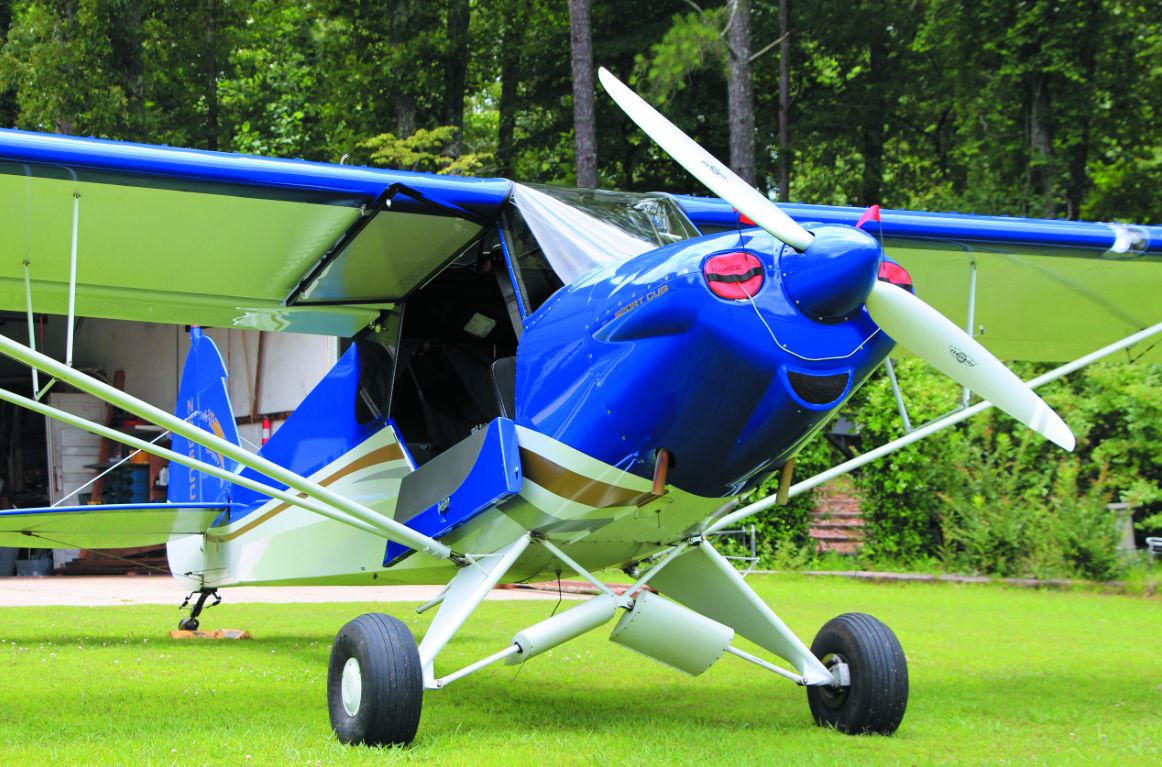
Ready to go shopping for a pre-owned taildragger? Our advice hasn’t changed. Before buying anything, have a real conversation with your insurance broker to identify potential deal breakers and what an insurer will demand for training. Think practically. Insurers tell us that complex, high-horsepower machines in the hands of newly endorsed pilots (older ones, too) are a higher risk.
“We see that pilots are having the same kinds of wrecks in taildraggers now as they historically have, and that’s by groundlooping them,” Marci Veronie at Avemco told us. But even if you are a risk, you don’t have to bottom feed the market. There are plenty of choices of modern, good-performing used taildraggers, and most come at a price premium. We found some nice ones in the CubCrafters preowned inventory.
There was a 2006 Sport Cub, still a baby at 630 hours total on the airframe and on the 100-HP Continental O-200 engine with Sensenich ground-adjustable prop. Fuel capacity is 24 gallons, and you can plan on cruising at an honest 100 MPH, sipping 6 GPH. With a 1320-pound gross weight, you can fly it under light sport rules, strictly VFR. Avionics are bare bones, with round-gauge instruments (no attitude), a Garmin 496 portable GPS in a panel dock, comm and transponder. It’s never been damaged, and the sharp paint scheme and utilitarian interior condition is listed as an 8/10, pretty much as you’d expect from a 600-hour, 16-year-old knock-around airplane. With an annual inspection coming due, it’s priced at $129,000.
Shopping at American Legend Aircraft in Texas proved again that it’s a brisk-selling market. Nearly all of its used taildraggers were sold, including a tailwheel-converted (via STC) Cessna 150C that brought $39,500. The airframe had 4800 hours and the engine had just shy of 600 hours since a major overhaul. On a side note, we’ve been shopping the Cessna 150/152 market to build a small partnership and have learned that we’re a couple of years late and a lot of dollars short; these airplanes have tremendously increased in market value, just like the Skyhawk.
To show what even more money can buy, consider a 2019 Legend Cub that served in the company’s demo fleet—essentially just broken in. It had a Gar min G5 EFIS, float bracket kit, digital engine monitor, Acme G3 gear shock strut system and good LED lighting. Some lucky owner flew it home for $145,900.
Over at Aviat Aircraft, there was lots of already-sold pre-owned inventory of Huskys. Available was a 2016 Husky A-1C with 293 hours total time on the airframe and 180-HP Lycoming engine, decked out in an eye-catching anniversary edition red and white paint scheme and equipped with a Garmin portable GPS in a panel dock, an Electronics International big-screen digital engine display, an electronic attitude indicator and tundra tires. It’s listed at $284,900, nearly $50,000 higher than Aircraft Bluebook suggested average retail price as optioned. Bluebook shows that a typically equipped factory-new Husky has a $242,500 list price.
Want something with a bit more power and go-places utility? Try a Maule M7-235B. We found a 1995 model with a low 1423 hours on the airframe and 460 hours since its Lycoming O-540 had a major overhaul, and 12 hours since it had a major teardown and an overhauled MT prop installed. It’s an IFR machine with dual Garmin G5 flight instruments, a Garmin GTN 650 IFR GPS, a JPI engine monitor and a Garmin ADS-B weather and traffic transponder. This airplane is for sale generously equipped, with included Trick Air 3000 skis, extended heavy-duty landing gear, 31-inch Bush wheels (and Bush tailwheel), flip-out 125-MPH windows, overhauled floats, vortex generators, and quick release rear seat. Always hangared, and with a new skylight, new windshield, new flipper door latches and paint that’s represented as a 8+/10, its $195,000 asking price seems fair as equipped. Without all of those included accessories, Aircraft Bluebook suggests that a 1995 M7-235B has an average retail price of $76,000.
Last, if you’ve successfully worked your way through the ranks of taildragger piloting experience and have your eyes set on something that’s a classic, high-performance bird, look to the Cessna 190/195 market. Aircraft Bluebook says that a 1954 195B might retail for $60,000, but ones that are meticulously restored will likely sell for nearly twice that. Bring your A-game—the Model 195 is powered by a 300-HP Jacobs R-755-A2 radial engine. Yes, get an insurance quote first. —Larry Anglisano
Rick Durden is an aviation attorney, CFII, holds an ATP with type ratings in the Douglas DC-3 and Cessna Citation, and is the author of The Thinking Pilot’s Flight Manual or, How to Survive Flying Little Airplanes and Have a Ball Doing It, Vols. 1 and 2.
This article originally appeared in the October 2021 issue of Aviation Consumer magazine.
For more great content like this, subscribe to Aviation Consumer!




































The only tail dragger that was close to being affordable at the flight school I looked at was a 140 Cessna. I wasn’t too impressed with it. Neither were the other renter pilots, because it got sold perhaps 2 years later.
Tailwheel flying, I always think about the 18 – 21 year olds who flew tail wheel WW2 4 engine bombers at night in all weathers fully loaded; Lancaster, Halifax, Stirling and B-17 with very few hours in their log books – wow
…and I believe they were flying the P-51s at around 250 hours.
Thanks, great article and perfectly timed for what I’m facing right now.
Perfect practice makes perfect. Just because it is “legal” to ask a J-3 CFI to check you out in a Cessna 185 doesn’t mean it is smart unless said J-3 CFI is current and competent in a C-185. In my opinion it is this lenient regulation that has led to the vast majority of losses. I have been a CFI, and tailwheel instructor, for 50+ years. One size does not fit all. Think of your tailwheel endorsement as a type rating, because that is what it should be. Ask for and demand proper training.
New tailwheel pilots, or new-to-type tailwheel pilots, need to be instructed to both competence and confidence levels. Confidence comes easier with a CFI in the back seat. But what happens after the endorsement and the CFI is no longer in attendance? Lack of confidence leads to tunnel vision, lack of cognition, accidents. Fact, a crosswind landing is no different, or no more difficult, in a taildragger than it is in a trike assuming you are competent and confident in both. If crosswind landings “scare”you in a taildragger get yourself some more quality dual.
I have 10 questions that I ask every student before we begin flying. I ask these questions because I want to know the students level of understanding and where to begin the flight training. Here are a few of those questions
1. What makes a wing stall?
2. Describe side and forward slips?
Perfect practice makes perfect.
Just because it is “legal” to ask a J-3 CFI to check you out in a Cessna 185 doesn’t mean it is smart unless said J-3 CFI is current, qualified, and competent in a C-185. In my opinion it is this lenient regulation that has led to the vast majority of losses. I have been a CFI, and tailwheel instructor, for 50+ years. One size does not fit all. Think of your tailwheel endorsement as a type rating.
New tailwheel pilots, or new-to-type tailwheel pilots, need to be instructed to both competence and confidence levels. Confidence is easier with a CFI in the back seat. But what happens after the endorsement and the CFI is no longer in attendance? Lack of confidence leads to tunnel vision, lack of cognition, accidents. Fact, a crosswind landing is no different, or no more difficult, in a taildragger than it is in a trike assuming you are competent and confident in both. If crosswind landings “scare”you in a taildragger get yourself some more quality dual instruction.
I have 10 questions that I ask every student before we begin their training. I ask these questions because I want to know the students level of understanding and where to begin their flight training. Here are a few of those questions
1. What makes a wing stall? (clue the answer is not AOA it is wing loading)
2. Describe side and forward slips? ( clue x-wind land in a side slip)
3. What is adverse yaw and does it help or hurt you in a crosswind landing? (clue helps more than the rudder often).
Most pilots, including ATP’s, can’t sufficiently answer these questions. Without a sufficient understanding of these basic principles it is difficult to be competent and confident. The answers to these principles are the same for trikes. With understanding and knowledge confidence increases and tunnel vision diminishes, and so do accidents. Again it is all about quality training.
In aviation we often speak what seems like an uncommon and counter-intuitive language. Example: In a side slip the aircraft is pointed forward down the runway. In a forward slip the aircraft is pointed to the side while tracking down the runway. All I can say is it must have been late on a Friday when that chapter was written!
Perfect practice makes perfect.
God bless.
Right off the street, young teen, I soloed a Champ in ’58 with about 10 hours of dual stretched over many months as I could slowly afford the time. Actually, that was very common solo time back then. Now a commercial pilot with many hours takes about 10 hours to just transition from tri gear to a tailwheel plane. Think it’s a lot of unlearning to do. I owned an Aeronca Chief for the past 20 years, hanging it up 2 years ago as I got older and insurance went up, up. And I had way more taildragger time for those many years than I did tri gear. If you just want to tri taildragger, I suggest a Chief (if you’ll fit in it) and can find an instructor. Chiefs are plentiful at the moment and the bottom feeders on price. I sold my A65 Chief for $15K and lots of good flying left in it. And then, see if you can just get liability only. If you wreck it, you just bit the bullet and write it off. Probably your loss after salvage will be not much more than a year or two of insurance initially.
In the fall of 2019, I bought a Luscombe and began my private pilot training. I was delayed a few months due to scheduling the check ride because of covid, but got my certificate in July of 2020. I documented the whole thing on my YouTube channel.
https://www.youtube.com/channel/UC1uN0DvRAjYEgmn-O4aPFyw
Jay
Fantastic! Good job. Luscombe aviator, true aviator.
I’ve owned and flown a 1986 Maule MX-7-180 taildragger for 23 years and about 2000 hours. I’m 75 and and insurance is around $2,900 a year including the broker’s fee for liability and $120,000 hull. I also have 500 hours over 7 years and a 1985 Cessna A185F taildragger with a 300 hp engine that I flew in all kinds of windy conditions on forest fires. I have lots of hours in other taildraggers such as Cessna 180, Super Decathalon, Beaver, Citabria, Super Cub and J-3. Light two-seat taildraggers do not give you enough experience with a more powerful, heavier 4-seat taildgragger like a C185 or Maule. To be safe and proficient in a taildragger, you need to practice landing in all kinds of conditions including side slopes, uphill, downhill, pavement, grass, gravel, dirt and rough surfaces. Gusty crosswinds on pavement are the most challenging. The secret is maximum concentration until touchdown with no sideways drift. That might involve touching down with the upwind wheel first. I usually do tail-low wheel landings to minimize final approach speed and raise the tail on touchdown for better forward visibility and less wear on the tail wheel. It’s best not to use brakes on a taildragger until the tail is on the ground and you are at a low ground speed. Otherwise you risk nosing over. Larger, heavier taildraggers have more mass in the tail and heavier engines so nosing over is more of a risk with brakes. You need to use ailerons into the wind even after landing to prevent a crosswind from picking up the upwind wing and pivoting the airplane on the downwind wheel. Tailwheel airplanes pivot on the main wheels more easily than nosewheel airplanes since the tailwheel free-casters on most of them and the center of gravity is aft of the main wheels. You need to immediately control any directional deviation with rudder input and avoid over-correcting. Otherwise it could develop into a swerve and ground loop. Bouncing is common on landing in a taildragger, especially if you come in too fast on final. Once the mains touch down, I quickly rock the yoke or stick forward to reduce angle of attack and keep the mains on the ground. Bouncing is also likely if you flare too high. Viewing the height of the airplane above the runway out the side of the airplane helps to control the flare and avoid a bounce. Switching your view between the side and front helps keep the airplane from drifting sideways and flaring too high. Aileron and rudder inputs need to be automatic reactions when you are close to the ground. Conscious thought takes too long so practice, practice, practice.